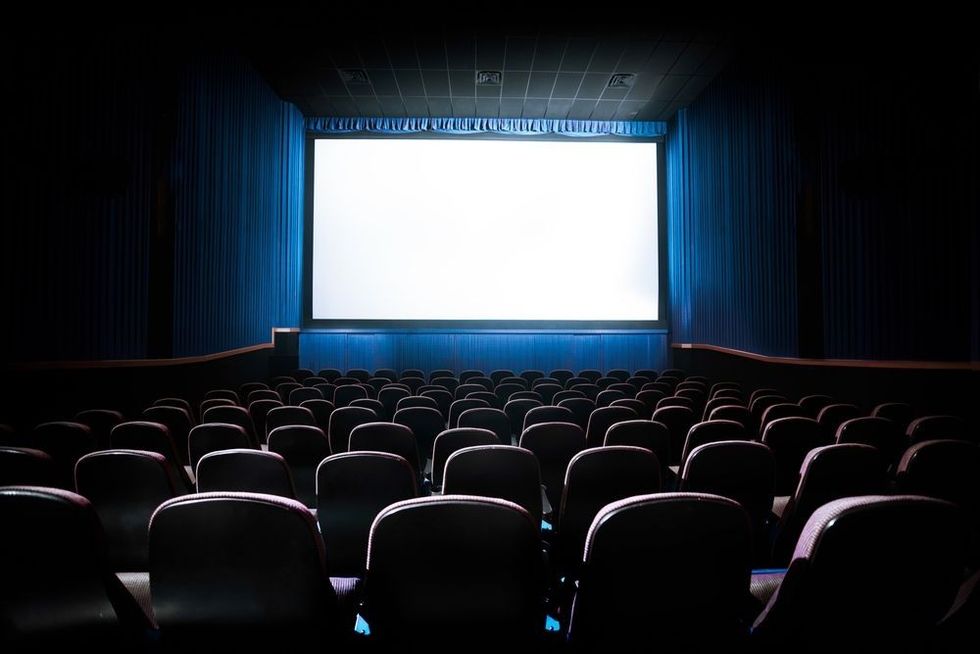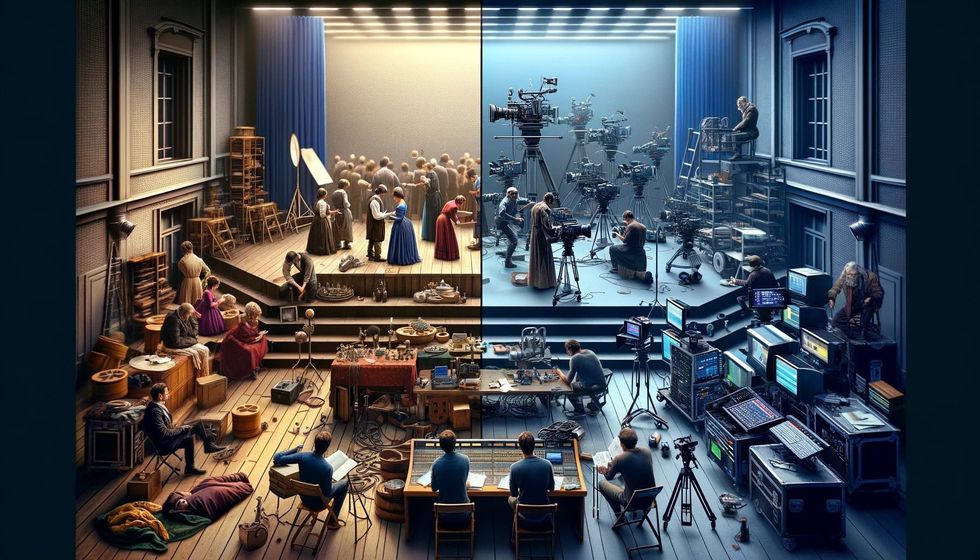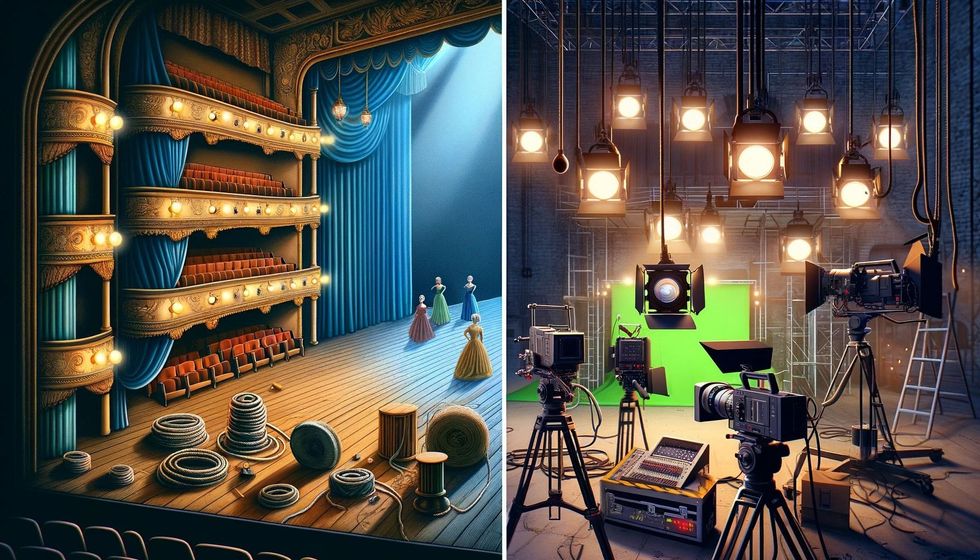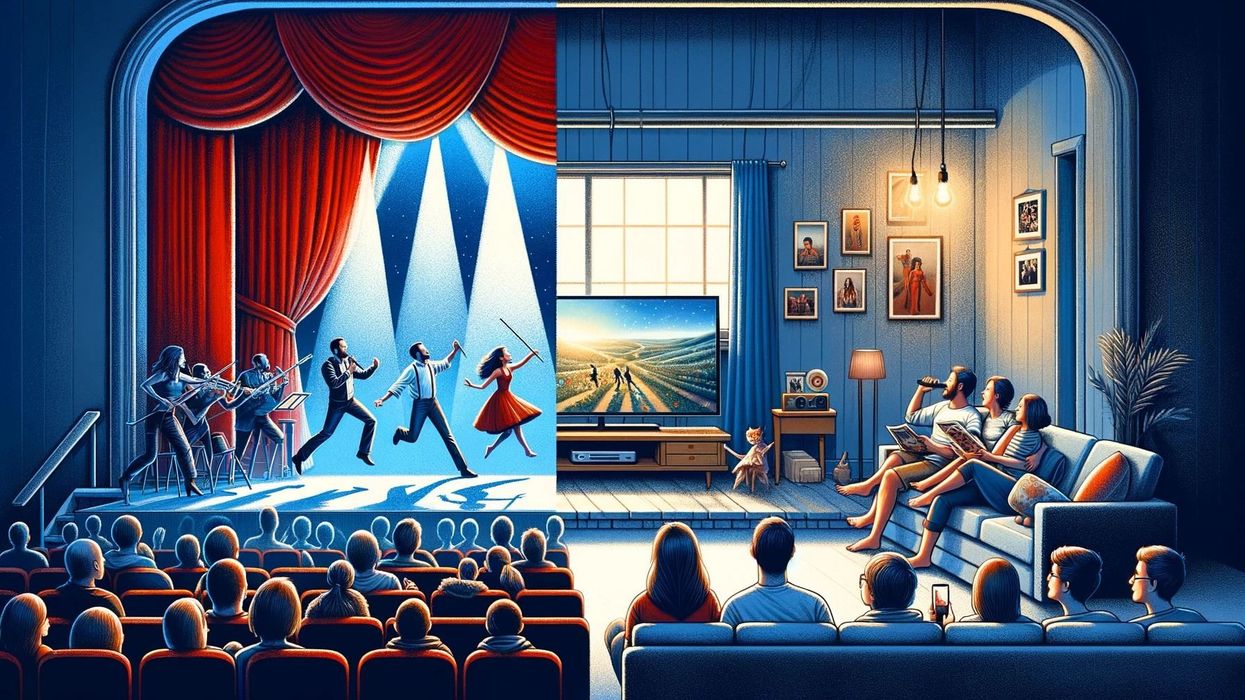Acting is an engaging art form that entertains and inspires across theater stages, film sets, and recording studios. This exploration into the different areas actors work in, from live performances to the detailed nature of film production, highlights how acting encourages creativity. It shows the creative techniques actors learn as they move between different environments.
The world of acting is also home to popular comedy films and theatre stars (the British spelling of 'theater'), where both timing and expression are key. Film captures these moments, allowing actors to share stories and emotions in a way that's different from live performances.
Acting careers are built on developing these skills. Women actors, who have historically faced challenges in getting significant roles, now shine as leading figures in theater and film, demonstrating the growth and development of acting techniques across the industry. This evolution highlights how acting is more than memorizing lines; it's about creating a connection with the audience, whether on stage or on screen.
Exploring the different aspects of acting, from the commitment of theater actors to the adaptability of film and TV actors, shows the diversity and continuous innovation in this art form. It's a world where theater stars alike contribute to the art of storytelling, constantly pushing the limits of the acting process.
Transitioning From Theater To Film

The journey from the live, interactive stages of theater to the world of film is a transformative experience for many actors. This transition tests their adaptability and offers a platform to expand their creativity. The following are some facts about acting that highlight the creativity involved in moving from theater to film.
- In theater, actors have to make sure their voices and actions reach the whole audience, while in film, they need to tone down because the camera is very close.
- When acting on stage, actors often use big facial expressions and movements so everyone can see, but in movies, small, detailed expressions are enough because the camera catches everything.
- Performing in a theater means doing the whole show at once, which requires a lot of energy, but in movies, scenes are filmed one at a time, and actors can try more than once.
- Theatre actors (the British spelling of 'theater') get immediate reactions from the audience, which doesn’t happen in movies because the audience watches the finished product on a screen.
- Moving to acting in films means learning how to act for the camera, including how to work with different camera shots.
- Actors in movies need to know how to work with the film crew and understand how movie-making works, like lighting and sound.
- Theater rehearsals give actors more time to get into their character, but in movies, actors need to be ready to perform with less practice.
- Movie actors have to be ready for sudden changes to the script, while theater plays usually stick to the original script.
- Actors going from stage to film miss out on immediate audience feedback, which can help boost a theater performance.
The Art Of Voice Acting
Voice acting is a special field that demands a unique set of skills. Without the use of facial expressions or body language, voice actors must rely entirely on their vocal abilities to convey emotion, personality, and depth. The following are some facts about acting that shed light on the creative opportunities within the art of voice acting.
- Voice actors work in a wide range of fields, not just in animation and video games, but also in radio and TV commercials, talking toys, navigation systems, and theme park rides.
- Many actors in this field audition for roles from home or at their agent's office, equipped with their own recording setups.
- To prepare for auditions, voice actors are given character descriptions and sometimes artwork, which helps them craft the right voice.
- Warming up is key for voice actors, using various techniques, from singing to experimenting with different vocal styles.
- Recording methods can differ greatly, with some voice work done in groups and some done solo, depending on the project's needs.
- Voice actors adjust their vocal tone to fit the specific project or character they're auditioning for, showing the versatility of their skill.
- Treating their voice as an instrument is vital for voice actors, which means looking after it carefully and avoiding anything that might cause strain.
- Finding new voices can happen in everyday life, from how they talk to pets to imitating friends and family.
- Voice acting is more than just making funny sounds; it involves bringing a complete character to life with depth and personality.
Mastering Stage Combat

Stage combat is an essential skill for actors, requiring precision, timing, and the ability to make choreographed movements appear real. Learning this art form not only ensures the safety of performers but also adds a layer of reality to the portrayal of physical conflict. The following are some facts about acting that illustrate the importance of stage combat on an actor’s ability to deliver a safe performance.
- Stage combat is carefully planned by experts known as fight directors or fight choreographers.
- Learning to trust and communicate with scene partners is essential for safely performing stage combat.
- The timing and precision in stage combat are critical to keeping everyone safe during a performance.
- Actors receive training on how to fall, roll, and execute other movements in a way that prevents injury.
- Practice for stage combat starts slow, with speed increasing as actors get more familiar with the moves.
- To make fights look real, actors use techniques like 'knapping' to make sounds that mimic the impact of hits.
- Being physically fit is important for actors doing stage combat because of the demanding nature of the choreography.
- During stage combat, being constantly aware of the environment is key to avoiding mishaps with props and scenery.
- Stage combat can include using weapons like swords, knives, and guns, each of which requires proper technique to handle safely.
- Preparing for stage combat takes a lot of rehearsal time, often a large part of the preparation for a show.
Role Preparation And Character Development

Exploring a new role is a creative process for actors. It involves extensive research, emotional exploration, and sometimes physical transformation. The following are some facts about acting that demonstrate how role preparation and character development are important to creating impactful performances.
- Role preparation starts with a thorough exploration of the script to figure out the character's goals, challenges, relationships, and growth from start to finish.
- Creating a backstory for their character helps actors fill in any blanks the script leaves, giving them a better grip on why their character acts a certain way.
- Getting into character might mean changing how they look, mastering certain ways of moving, or using a new way to speak.
- Before and during shows, actors use special methods to keep focused and stay in character, like certain mental or physical exercises.
- Developing a character is often done with others, talking and trying different things in rehearsals to see what works best.
- Actors need to keep learning and trying new things to get better at their roles and make their characters more interesting.
- Staying true to the character while being able to adapt and bring something new to each performance is what makes an actor's portrayal believable.
- It's important for actors to show how their character changes emotionally throughout the story, making the audience believe and care about what happens.
- Using improvisation can help actors find more realistic ways their characters might react or interact with others.
- The choices actors make about how to move and speak need to be something they can keep doing the same way throughout the whole performance.
The Evolution Of Acting Styles

Acting, like any art form, has evolved significantly over time. From the expressions of classical theater to contemporary film, the changes in acting styles reflect broader cultural shifts and advancements in technology. The following are some facts about acting that explore the rich history and continuous evolution of acting styles, offering insights into how actors adapt within their craft.
- Acting's roots go back to ancient Greece, where it was a key part of society and often tied to religious festivals and community events.
- The Renaissance reignited interest in the arts and theater, leading to deeper character development and the start of professional acting.
- The 17th and 18th centuries introduced melodrama, with its over-the-top emotions and clear good vs. evil stories, mirroring the era's values.
- The Stanislavski system, from the late 19th to early 20th centuries, shifted acting towards realism, focusing on emotional truth and psychological depth.
- Method acting, derived from the Stanislavski approach, gained popularity in the 20th century, pushing actors to use their own feelings and experiences for authenticity.
- The creation of film and TV brought new challenges for actors, like getting used to the camera and filming scenes out of order.
- In the digital era, acting has changed with technology like motion capture and CGI, making actors perform in settings that often lack traditional props or scenery.
- Improvisation is becoming more important in both theater and film, giving actors the chance to be more creative and deeply explore their roles.
- The exchange of cultural practices globally is shaping new acting styles, encouraging actors to mix different traditions and try new things.
FAQs
What does it mean when a film actor lacks continuity?
Continuity in film acting is about making sure a character stays the same in their emotions, looks, and actions from one scene to the next. If a film actor lacks continuity, it might make the story hard to follow and confuse the viewers.
For example, if an actor seems very upset in one scene but then looks happy in the next without a good reason in the story, that's a mistake in continuity. Films are not always shot in order, so actors need to remember where their characters are in the story during different scenes.
How do casting directors view the experience of theater actors when casting for film roles?
Casting directors often value the experience of a theater actor when casting for film roles, recognizing the training and discipline that theatrical acting instills. Theater actors bring a depth of character understanding and a strong foundation in acting techniques, which can be beneficial in film.
However, casting directors also look for an actor's ability to adapt to the specific requirements of film acting, such as working with the camera and understanding the fine details of film performance. Making the theater-to-cinema transition is a valuable skill in a person's acting career. It shows how versatile and adaptable an actor can be.
Have there been significant changes in the roles available to a woman actor in the transition from theater to cinema?
Yes, there have been significant changes in the roles available to a woman actor in the transition from theater to cinema. Historically, in theater, men often played female roles due to cultural and societal restrictions on women performing on stage. However, as the entertainment industry evolved, especially with the advent of cinema, opportunities for women actors expanded dramatically.
A female actor can pursue a wide range of roles in both theater and film, with cinema often offering more diverse and complex characters.
What is the importance of an actress recording in screen acting?
In screen acting, an actress recording refers to the process where an actress performs and records her lines, often in a studio setting for film or voice-over work. This is a critical part of on-screen acting as it captures the actress's vocal performance, which must convey emotion and character depth without the benefit of a live, visual context.
The recording is then synchronized with the visual elements of the film or animation to create a cohesive and believable character portrayal.
Acting is not just an art form for entertainers; it's a tool that sharpens the mind, strengthens teamwork, and unlocks creativity. Whether it's through memorizing lines to improve focus, working with others in a cast to build teamwork, or using creative thinking for problem-solving, the skills developed in acting can benefit almost any professional field.
Embracing acting techniques offers a unique way to enhance personal and professional growth, making it a valuable pursuit for anyone looking to boost their creativity and effectiveness in their career or daily life.
Related Articles Around the Web













